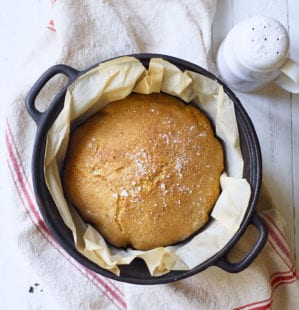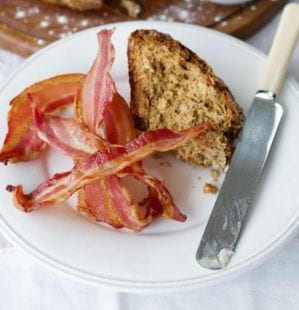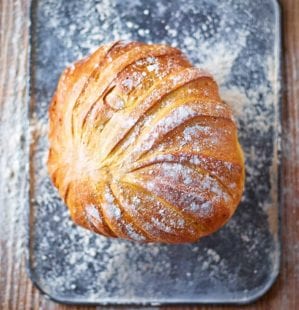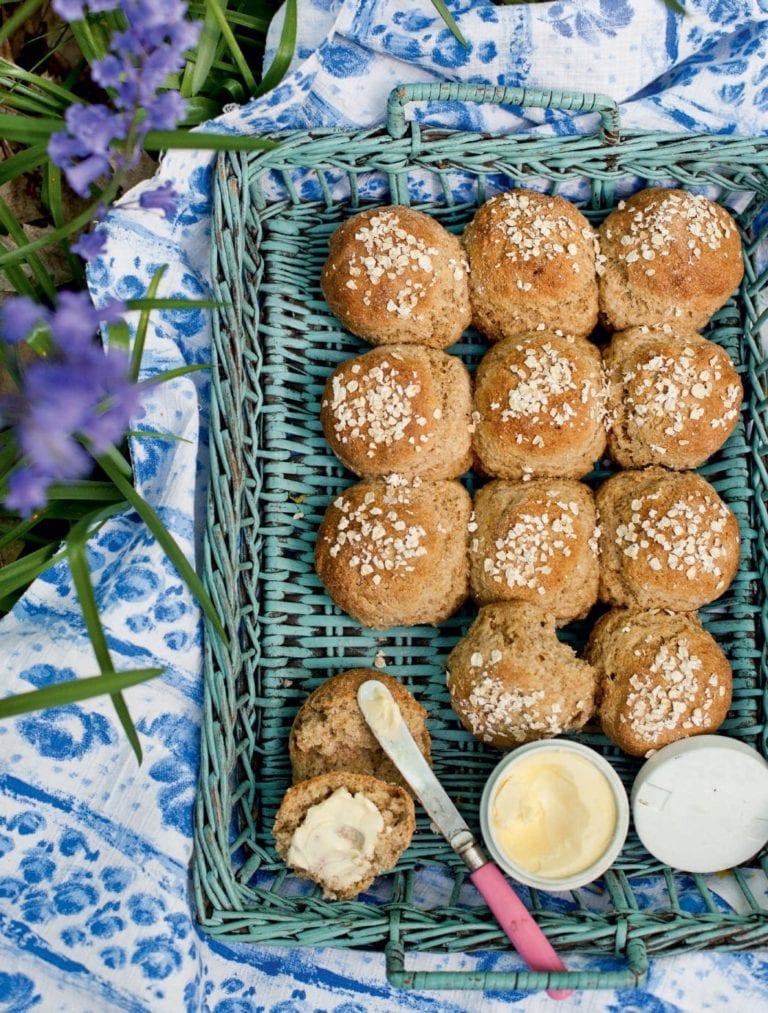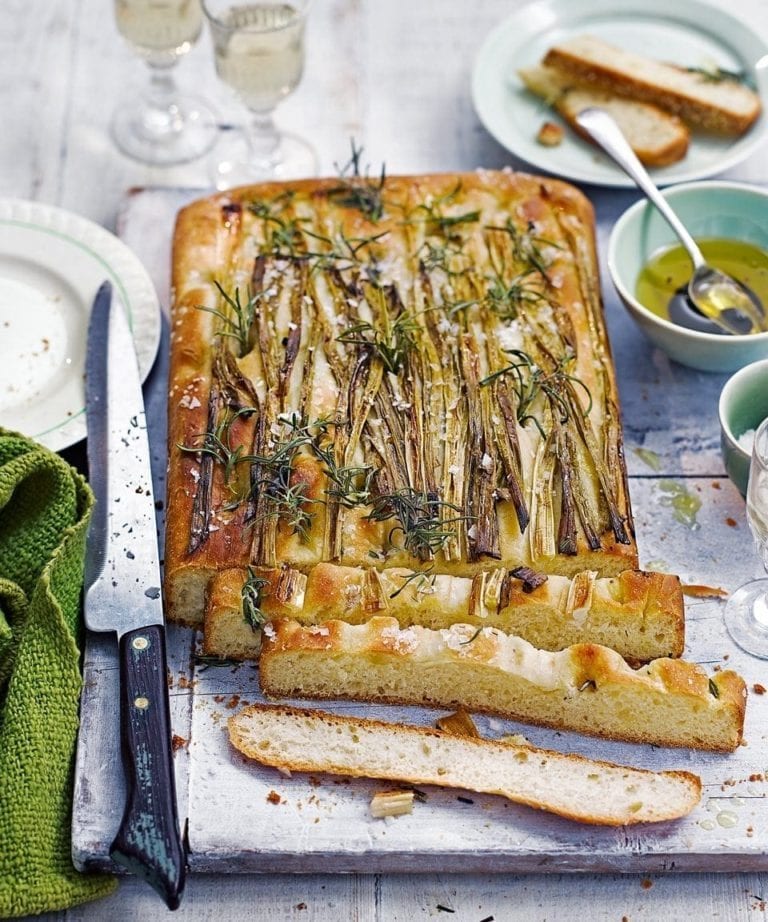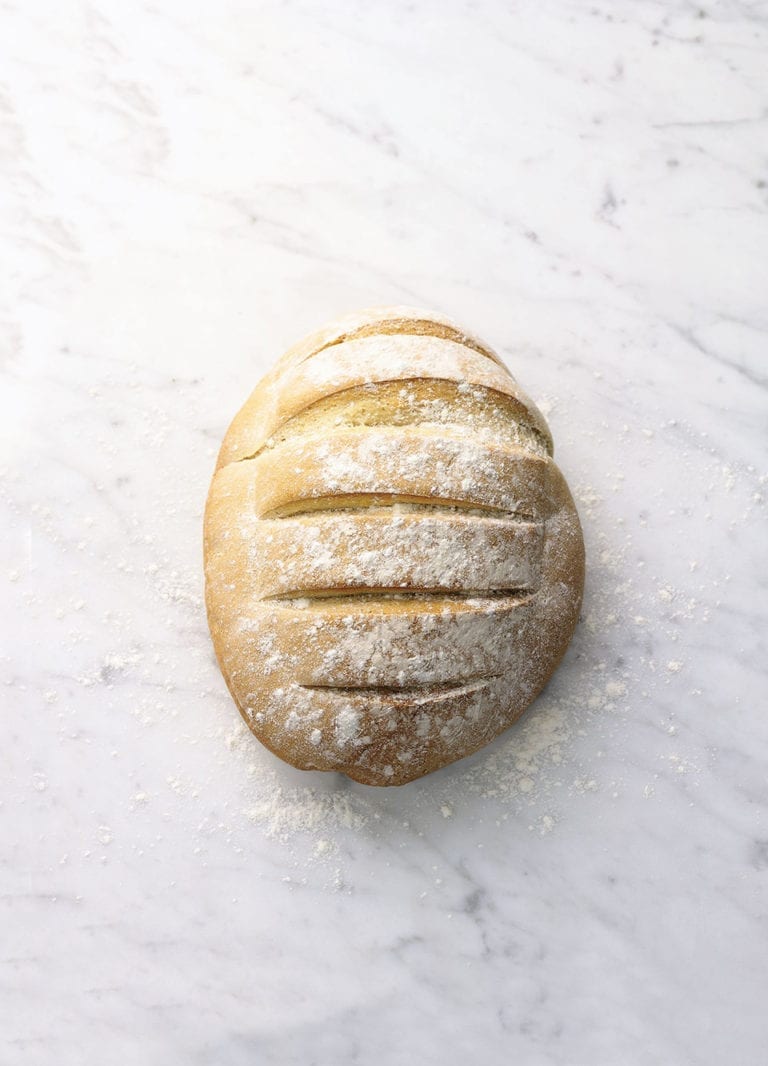Should you use strong flour or plain flour when making bread? We investigate…
If you’re making a basic loaf, most recipes tell you to use strong bread flour. But does it make much difference if you use plain flour instead? Strong flour or plain flour: Lucas Hollweg put them to the test…
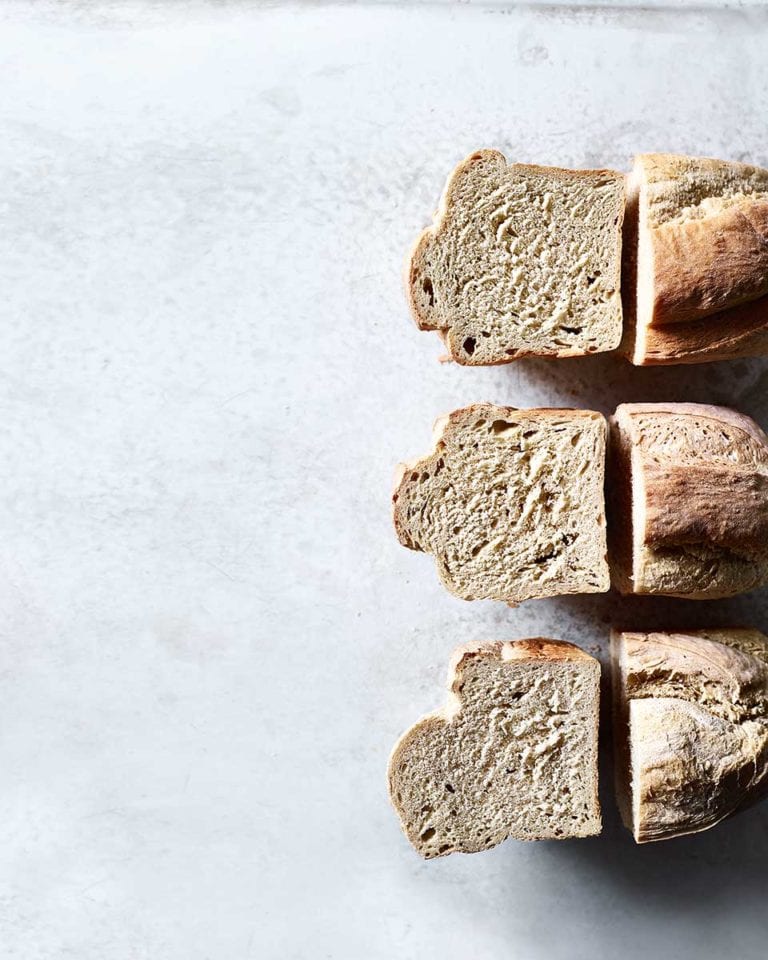
Let’s start with the science. Different types of flour contain varying levels of protein. When flour is mixed with water, the proteins form gluten – and it’s this that makes dough elastic. Kneading develops the gluten further. Plain flour is usually about 10 per cent protein, while strong flour – made from ‘hard’ wheat – tends to be 12.5 per cent or more. Strong flour isn’t good for cakes and biscuits because the high gluten level makes them tough. But for bread, where you want to trap the gas bubbles that give the loaf its structure and springiness, strong flour is ideal – hence why it’s often called bread flour.
But what happens if you don’t have the right flour in the cupboard? We made three identical basic loaves, one using strong white flour, one using plain white and one using a 50/50 mix of the two.
Testing strong flour vs plain flour in breadmaking
Each loaf was made with 500g flour, 7g fast-action yeast, 7g salt and 350ml lukewarm water. The loaves were mixed by hand, then kneaded for 10 minutes. They were then left to rise until doubled in size, knocked back (had the air pushed out) and shaped into loaf tins. After proving for 30 minutes, they were floured, slashed, then baked at 220°C/200°C fan/gas 7 for 15 minutes, then for 30 minutes at 200°C/180°C fan/gas 6.
Here’s what we found…
1 When testing with strong flour, the dough was the firmest of the three but it was also the most elastic and gave the best window pane test (stretching into a see-through membrane without breaking – this indicates proper gluten development). The dough expanded well during baking, with an attractive domed top. The inside was soft and springy and the crust firm and chewy.
2 When testing a 50/50 mix, predictably, this shared features of both the other loaves. The inside of the baked loaf was a little denser than the strong flour loaf, but it had a bit more spring than the one made with plain flour. The extra gluten was evident in slightly more stretch around the slashes in the top.
3 When testing with plain flour, the kneaded dough didn’t have as much structure as the others. Although soft and pillowy, it gave the weakest window pane test. The loaf rose well during baking, though not as much as the one made with strong flour, and it mushroomed a bit at the top. The inside was soft, but denser and less springy than the strong flour loaf. The crust was also a bit harder.
The verdict, which flour is best?
Using just strong flour gave the best loaf. But if you only have plain flour or need to supplement strong flour with plain, go ahead. The loaf will rise, with a soft crumb and golden crust, and the bread will taste better than a cheap, shop- bought loaf – but it won’t have the springy chew of a loaf made entirely with strong flour.
Click here for all of our savoury bread recipes.
Subscribe to our magazine
Food stories, skills and tested recipes, straight to your door... Enjoy 5 issues for just £5 with our special introductory offer.
Subscribe
Unleash your inner chef
Looking for inspiration? Receive the latest recipes with our newsletter
